
Lexington’s African American Heritage Walking Tour
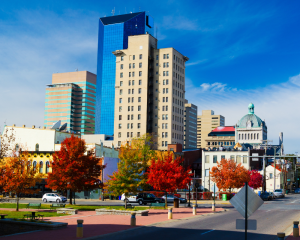
Join us for an on-demand walking tour of Downtown Lexington’s African American heritage sites.

Join us for an on-demand walking tour of Downtown Lexington’s African American heritage sites.

Explore topics related to Science, Technology, Engineering, Art, and Math (STEAM) in this space for youth, grades 3-12.

Learn how the Lexington Public Library Foundation empowers change within our library system.

Learn or develop a personal or professional skill with LinkedIn Learning classes, available for free with your library card.

Did you know physical materials renew automatically if they don’t have a waiting list? Check your account online to see the status of your items.

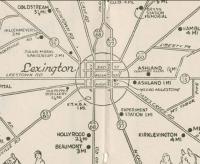
The Kentucky Room's collections contain Lexington's residential directories going back over 200 years, and are some of the most useful resources for researchers looking for family information, neighborhood histories, and house histories.
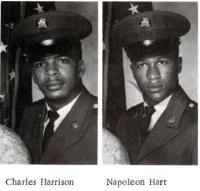
The United States Army Armor School began in 1940 as the Armored Force School and Replacement Center at Fort Knox, Kentucky. It spent a few years post World War II as inactive, until the 3rd Armored Division was reactivated in 1947, and became the US Army Training Center, Armor (USATCA), in 1956. Both Army and Marines soldiers received training on a variety of subjects and equipment.
Fort Knox hosted the school until it moved to Fort Benning, Georgia, in 2010, as the US Army Armor School. The yearbooks in the collection contain the names and photographs of the officers, NCOs, and graduates of the 8 week basic combat training at Fort Knox. There are also many photographs of the various buildings, training, and activities.
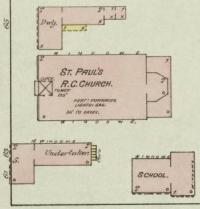
St. Paul the Apostle Roman Catholic Church was formally created in the Covington Diocese in 1868, by Father John Bekkers. Still an active parish, the church has celebrated its 150th anniversary and is still in its original building in downtown Lexington.
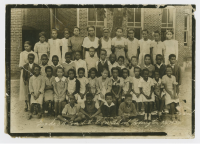
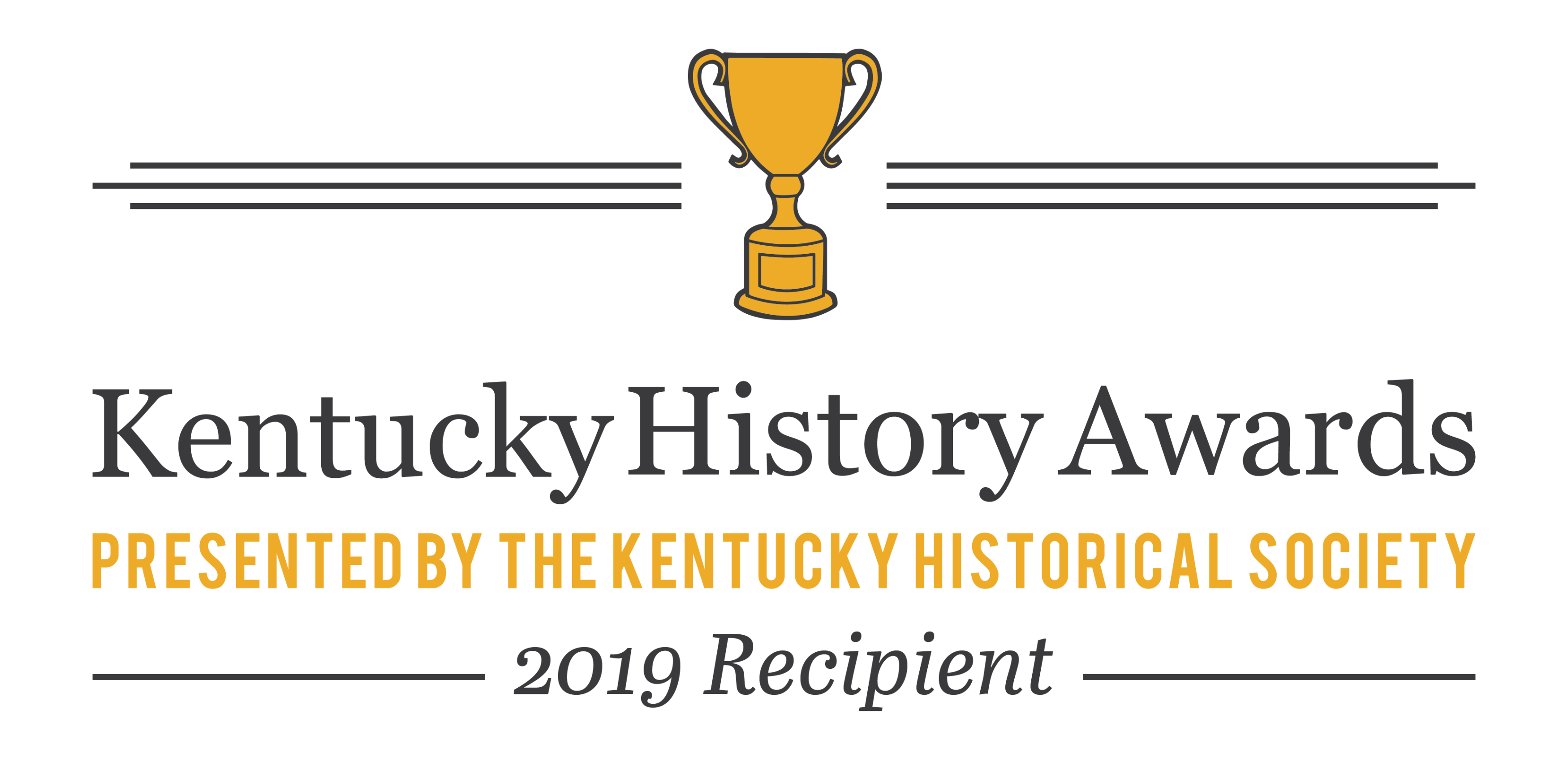
All databases are available from this page.
Description coming soon.
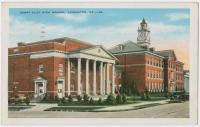
Lexington's school system dates back to the city charter of 1831, and it first school opened in 1834. From a single building in 1834 with about 100 students, today the Fayette County Public School system has over 40,000 students and 68 schools and programs. Lexington and Fayette County combined districts in 1968, shortly before the city/county government merger in 1974.
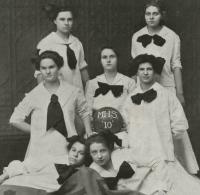
The Morton School Number 1, Lexington’s first public city school in 1834, was originally built on the corner of Walnut (later Martin Luther King Dr.) and Short Street. William Morton, who died in 1836, established a trust to be invested and used to maintain a free public school in Lexington, and the first public school was named in his honor. It became the Morton High School in 1904 and the Morton Junior High School in 1917. The school was relocated to Tates Creek Road as a middle school in 1938.
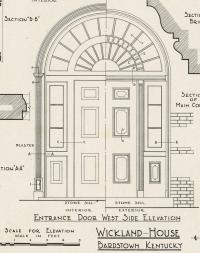
Old Kentucky Architecture is a comprehensive book by Rexford Newcomb that was published in 1940. It contains photographs and floor plans from significant architectural buildings all around Kentucky, but primarily focused on the central Kentucky region, that were built between 1767-1860. It also mentions several buildings designed by architect Gideon Shryock, as well as a few by John McMurtry.
The buildings included are Old Fort Harrod, Old Creel Cabin, Shaker Village of Pleasant Hill, William Crow House, Old Du Puy Farm House, Bardstown's Old Stone Jail, Colonel William Whitley House, Federal Hill, Liberty Hall, Wickland, Clay Hill, Benjamin Gratz House, Dr. John C. Lewis House, Rose Hill, The Grange, Ridgeway, Xalapa Farm, House on Edgehill Road, Castlewood, Woodlawn, Colonel Andrew Muldrow House, Dr. Ephriam McDowell House, Marshall House, Hopemont, Shropshire House, Eothan, Buford House, General McConnell Farm, Padgett House, Crittenden House, Layson House, Waveland, Bridge House, A. E. Hudnely Farm, Smokehouse, Ashland, Saint Joseph’s Church, Harrodsburg Old Physician’s Office, Old House, Orland Brown House, Diamond Point Passmore House, Chestnut House, Adams House, Moberly House, Mansfield, Showalter Residence, Professor McClure House, Brooker Residence, Rev. Dr. Robert Alexander Johnstone House, Scotland, Helm Place, Carrick House Whitehall, Old Capitol Building, Morrison College Transylvania University, Daughter’s College Harrodsburg, Centre College Old Main Hall, Giddings Hall Georgetown College, Jefferson County Court House, Bank of Louisville, Louisville Board of Education, Kentucky School for the Blind, Kentucky School for the Deaf, Cross Keys Tavern, Tomb of Matthew Shryock, Ingelside, Loudoun House, Mound Cottage, Botherum, Walnut Hill Church, Pigsah Church, Sexton’s Cottage Lexington Episcopal Cemetery, and the Abbey of Gethsemani.
Several of these buildings have been demolished.
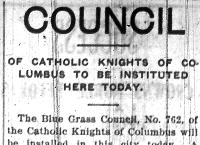
The Knights of Columbus is a fraternal Catholic service organization begun in the 1880s. In 1903, the local Bluegrass Council 762 became the third chapter in Kentucky, and it acquired its 4th degree status in 1920. One of the organization's earliest missions dealt with local unemployment before WWI and assisting with families in its parishes, and it also supported local veterans.
Information from Knights of Columbus, Kentucky State Council
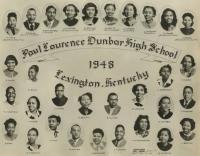
Dunbar High School opened in 1923 at 545 North Upper Street as the only all-black high school in Lexington’s city school system. The school was named after African-American poet Paul Laurence Dunbar (1872-1906), whose parents had been enslaved in Kentucky. Dunbar was a source of immense pride for many in Lexington; it was ambitious in academics, formidable in athletics, a meeting place for community organizations, and the first of only eight black high schools to ever be accredited by the Southern Association of Colleges and Schools.
In 1967, after federal pressure to racially integrate schools, the Fayette County board of education decided to close Dunbar High School. This elicted a substantial outcry from many black Lexingtonians, who saw Dunbar as a community cornerstone, and whose children would be bused longer distances to school. In 1968, the school board promised that the next high school opened in Fayette County would also be Dunbar, which then opened in 1990. After the original closed in 1967, the old Dunbar building remained in use for several years as a junior high school. Most of the building was razed in 1974; what remains of it has been converted into the Dunbar Community Center.
The Dunbar Echo became the student publication, coming out a few times each year. The Lexington Public Library holdings contain the yearbook editions of the publication, which contains information about students, alumni, faculty and teachers, sports, essays, student activities, attendance, budget, and Echo sponsors. There are also black and white photos of some of the students and faculty.
Available yearbooks
Information from:
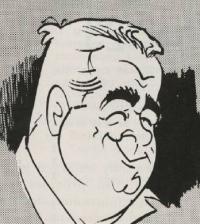
The Around the Town in Lexington, Kentucky magazine pamphlet contains advertisements for local attractions, apartment homes, restaurants, and hotels. It includes a small section with details about travelling in Lexington, such as the time zone, post office location, and the hours of alcohol sales. There is a schedule of events for Lexington, and a Television Guide highlighting popular programs. The last half of the guide contains an in depth article about the local historic home museum, Waveland.
Around the Town in Lexington, Kentucky was owned and published by Wallace “Wah Wah” Jones, professional basketball player and politician until 1967. He was appointed as Malt Beverage Administrator in 1967 (Lexington Herald, 1967-10-12) by Governor Louis B. Nunn, and in 1969 resigned due to his involvement with the publication (Lexington Herald, 1969-08-12). Around the Town in Lexington, Kentucky contains numerous alcohol advertisements, and it was seen as a conflict of interest, though Mr. Jones claimed to have sold the publication prior to his appointment to the Alcohol Beverage Control board.
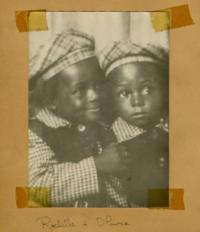
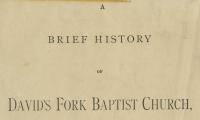
In 1768, Lewis Craig and other members of the Spotsylvania Baptist Church were arrested for preaching without a license issued by the Church of England. Their case was later defended by Patrick Henry.
To free his congregation from what he felt was religious persecution, and to capitalize on the opportunities of available land in the area, Craig formed the Traveling Church and brought his entire congregation through the frontier to Kentucky and established Bryan's Station Baptist Church. As the church grew too large for one meeting space, it formed David's Fork Baptist Church in Fayette County in 1801. The church built a new space in 1857, where they still hold services.
The pamphlet is part of the library's collection in the Kentucky Room.
Information from At the Meetinghouse on David's Fork: a History of David's Fork, 1891-2001 by Randy Smith, 2001.
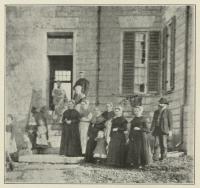
Shaker Village of Pleasant Hill has existed outside of Harrodsburg for over 200 years, and is a popular site to visit today. The library's collection contains a considerable amount of information on the community's origins and history.
The "Shakertown" pamphlet was written in 1921, and gives a very brief overview of the history and purpose of the original Shaker settlement outside of Harrodsburg in 1805. Old Shakertown and the Shakers by Daniel Mac-Hir Hutton was published in 1936, and contains illustrations, photos, and history of Shaker Village from 1805-1936. Both items are in the public domain.

The Lexington Musicians' Association is the local chapter of the American Federation of Musicians (Local 554-635) and was chartered in 1910. At the time of its creation it raised some controversy as the first musician labor union in the city. The LMA was affiliated with Lexington's Central Labor Union.
The directory contains information on Kentucky member musicians, the union rates, and instruments played.
Information from "Musicians' Union a Controversy." Lexington Leader 7 November 1910: 2. Microfilm.
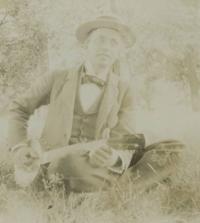
Major Henry Clay McDowell purchased the Ashland Estate from Kentucky University in 1882 with his wife, Anne Smith Clay McDowell, who was a granddaughter of Henry Clay. The McDowells took great care to revive the grounds to their former glory and made several lasting improvements, including the construction of a glass conservatory adjoining the terrace, which is visible in several of the collection's images. During the period that Ashland was owned by Kentucky University, a large Mechanical Hall was erected on the grounds, which the McDowells converted to a stable and used to reestablish Ashland as a thoroughbred stock farm. The tenure of the McDowells at Ashland was marked by numerous celebrations and social events on the grounds.
This photo collection shows one of many gatherings of friends and family, taken circa 1894, which included a parade of the estate’s horses. Thoroughbreds Impetuous, King Reine, Oratorio, Argentina, and Bracegirdle are all being proudly shown at this event. Photos also show members of the McDowell family in attendance, including Major McDowell and his wife, and their daughters Nanette, Julia, and Madeline. The author John Fox Jr. was a frequent guest of the McDowells at Ashland and can be seen in one image playing a banjo on the lawn.
Information on the history of Ashland from Ashland: the Henry Clay Estate by Eric Brooks, 2007.

The Kentucky Mountain Club was founded in 1929 as a social organization for residents of Lexington, Kentucky, who had been born or resided in the counties of eastern Kentucky. While it served as a social and educational club, its members also provided support during regional emergencies and helped establish tubercular sanitoriums in the eastern Kentucky mountains in the 1930s.
The Kentucky Mountain Club directories contain organizational information about the club’s history, activities, officers, woman’s auxiliary, articles of incorporation, and membership. The membership roster is presented alphabetically, then listed again by county. The directory also contains a scattering of poems, photographs, and business advertisements.
Membership for the club was limited to the following counties: Adair, Bath, Bell, Boyd, Breathitt, Carter, Casey, Clay, Clinton, Cumberland, Elliott, Estill, Fayette, Fleming, Floyd, Greenup, Harlan, Jackson, Johnson, Knott, Knox, Laurel, Lawrence, Lee, Leslie, Letcher, Lewis, McCreary, Magoffin, Martin, Menifee, Monroe, Morgan, Owsley, Perry, Pike, Powell, Pulaski, Rockcastle, Rowan, Russell, Wayne, Whitley, and Wolfe Counties.
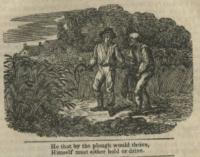
The Kentucky Almanac was a regional almanac that began printing in 1788, at the office of John Bradford’s Kentucky Gazette in Lexington. The Gazette itself began publication in 1787, and other almanacs followed.
The almanacs contain information about local lunar and solar patterns, predicted weather patterns for the year, and also lists court days for all of Kentucky’s counties for that time. It continued being published through the 1840s.
Viewable Almanacs
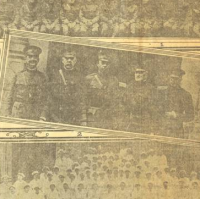
The Council of Defense books contain records for Fayette County’s Army soldiers, Navy sailors, Marines, and Army nurses in World War I, and include information regarding the person’s residence, birth place and date, specific units and engagements, commendations, injuries and disabilities, desertions, and discharge or casualty information.
These records are especially distinctive because they include service records from soldiers, sailors, marines, and the Army nurse corps; nurses served throughout various wars in the United States, but World War I became the first time that nurses were given officer ranks and insignia.
At the session of the General Assembly of Kentucky, which convened January 8, 1918, an act was passed and approved on March 15, 1918, creating the Kentucky Council of Defense. This act was approved as the state’s response to the Council of National Defense, which was formed in August, 1916, to support the nation’s war effort in World War I. The Kentucky act gave the state organization the authority and responsibility to coordinate the Kentucky war efforts within the state with the national war effort, for the duration of the war.
Within the act, these responsibilities included appointing representatives through the state ‘to report treasonable acts or utterances;’ coordinate state-wide war efforts; coordinate all voluntary patriotic organizations and committees and supervise donations; acquire its own private donations; encourage support of the war effort through activities and speakers, publishing pamphlets and bulletins; create its own committees for support or advisory boards; and report on its activities to the state governor each year. The lists of committee members are included in the beginning of Volume I.
In addition to the responsibility of supporting the state war effort, the Council was given the authority to investigate questions regarding its responsibilities, through subpoenas of witnesses and petitions when necessary.
The first state session met in Louisville in March of 1918, and Fayette County’s meeting followed on June 25th, 1918, in the director’s room of the Fayette National Bank in Lexington, on the corner of West Main and North Upper, in what is currently the 21c Museum Hotel.
After the war, each county’s service records were copied, bound, and presented to the county, though many of the Council of Defense books have since been lost. Of 120 counties, the whereabouts of 36 are known. In addition, a Kentucky set is housed in the Kentucky Department of Military Affairs in Frankfort, and the Filson Historical Society houses the entire 144 volume set of the civilian records.
- Information regarding the Council of Defense activities and responsibilities from Report of the Activities of the Kentucky Council of Defense to January 1, 1920, p. 8-23.
- Information regarding the current whereabouts of the volumes from Kentucky and the Great War: World War I on the Home Front by David J. Bettez, p. 400-402 (2016)
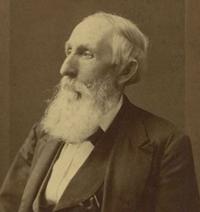
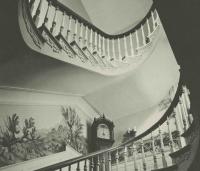
Old Homes of the Blue Grass is a photographic review of historic homes in Kentucky’s Blue Grass region. Published by The Kentucky Society in 1950, the black and white photographs show various phases of Kentucky Architecture between the Revolutionary and Civil Wars.
Homes and properties featured: Manchester, Malvern Hill, Harkaway, Bryan Place, Highland, Rose Hill, Mount Hope, Mansfield, Welcome Hall, Old Moore Place, Old Cabin, Hartland, Alleghan Hall, Duntreath, The Larches, Cherry Grove, Hopemont, Mount Brilliant, T. Howard’s Log Cabin, Woodburn, Helm Place, White Hall, Ashland, Shady Side, Stony Point, and the Old Episcopal Burying Grounds.
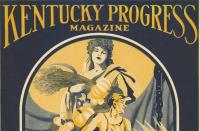
The Kentucky Progress Commission was formed in 1928 in order to draw tourism and business to Kentucky. It was formed by the Kentucky Legislature, and was a 12 person board. The “Kentucky Progress Magazine” was used by the board to promote Kentucky, and features local interest stories, photographs of people, places, and activities. It also features ads placed by various cities around the state.
Some issues contain material that is under copyright, but qualifies for display by libraries under Section 108(h) of US Copyright Law. It is the user's responsibility to determine the copyright status of the material they want to use. If a section is hidden, please contact us to view it.
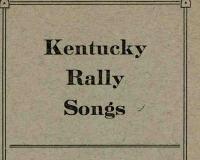
The Kentucky Rally Songs pamphlet contains 42 songs compiled and printed by the state chapter of the Woman’s Christian Temperance Union, to be used at the many gatherings and rallies that they organized in the late 19th and early 20th centuries. The songs, sung to popular tunes of the day, dealt with prohibition and women’s suffrage.
The Woman’s Christian Temperance Union was an organization founded in 1873 to promote social reform along with Christian moral principles, and the Kentucky chapter was extremely active. In addition to politically supporting sympathetic political candidates, the WCTU also held many social events to advocate for alcohol and tobacco abstinence, with a focus on overall moral reform.
Information from the Kentucky Historical Society.
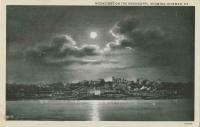
The Knowles Postcard Collection contains images of notable Kentucky locations, such as Ashland, Keeneland, and Mammoth Cave, as well as county courthouses, farms, schools, and many others. The 84 images are both artist-drawn and photographs from the early to mid-20th Century.
The Knowles Postcard Collection was donated to Lexington Public Library by Johnson and Catherine Knowles, along with their son Colin, in 2006. The Kentucky postcards are part of a larger collection of 14,000 cards inherited from Johnson’s mother, JoAnn Baxter Zeisler, which consisted of images from across the United States. Upon inheriting the collection, the Knowles family decided to donate sets of postcards to their respective locations in museums, libraries, and historical societies throughout the United States.
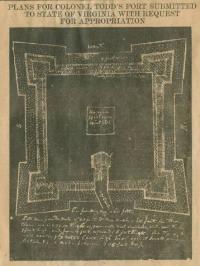
In 1917, the Woman’s Club of Central Kentucky hosted a series of speakers giving historical sketches on people and places of local interest. Maude Ward Lafferty’s speech in February of 1917 detailed a brief history of Lexington and specifically detailed the Block House on Main and Mill, Lexington’s first house, and the Town Branch Trail running through downtown Lexington. The entirety of the speech was printed in the newspaper, along with relevant maps.
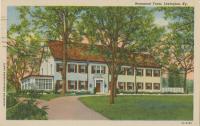
The Fayette County Postcard collection contains images of well-known sites in Central Kentucky, such as Keeneland, Transylvania University, Ashland, and many others. The 80 images provide an interesting perspective of Lexington architecture, industry, and culture in the early 20th Century.
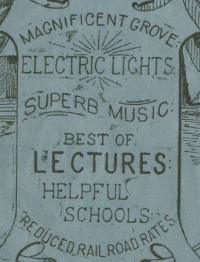
The Kentucky Chautauqua Assembly presented an annual event in Lexington’s Woodland Park with days of programming. Presentations varied from live music and entertainment to lectures and speeches from national figures. The Kentucky Chautauqua began in 1887, to great popularity, and continued through 1903. After Woodland Park was taken over by the city and reconstructed in 1904, new Chautauqua series did take place by the Lexington Chautauqua and later the Redpath circuit Chautauqua.
The Lexington Public Library collection has two programs, detailing the events for the 1892 and 1896 Kentucky Chautauquas.
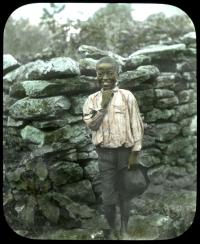
Elmer L. Foote served as official photographer of the Cincinnati Public Library for many years, and produced photographs that appeared in the Cincinnati Commercial Tribune during the early years of the twentieth century. Lantern slides are glass positive transparencies, viewed through a back lit projector. The Lexington Public Library does not have record of when the slides were donated, or the donor’s name. Records do indicate that the library purchased a projectoscope for viewing glass slides in 1912, and a separate lantern slide collection was donated to the library in 1919. The slides contain examples of posed portraiture, scenery from around Kentucky, documentation of the new High Bridge, as well as several historic buildings and homes, some of which are unidentified.
He was born in Glastonbury, Connecticut on February 27, 1863, the son of Edwin Foote and Ellen Hodges Foote, both natives of Connecticut. He came to Cincinnati about 1884 and married Estelle Allee of Cincinnati in 1888. Foote died at age 56 in Norwood, Ohio on September 21, 1919 and is buried in Spring Grove Cemetery, Cincinnati, Ohio. Foote's obituary in the Commercial Tribune of September 22, 1919 describes him as nationally known, and mentions his "photographic genius." The article further describes Foote's pictures taken among the Cumberland Mountains and outdoor scenic snow views, appearing at intervals in the Commercial Tribune, as photographic classics.
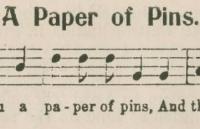
Mountain Ballads for Social Singing contains 15 songs selected for the Vesper Hour gatherings at Berea College. The songs were part of a larger collection, English Folk Songs in the Mountains of the Southern Appalachians, which was published in 1918 as American-English Folk-Songs: collected in the southern Appalachians and arranged with pianoforte accompaniment.
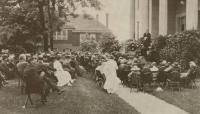
The Hamilton Female College catalogs list the school’s Board of Trustees, faculty, alumnae, graduates that year, directory of students, courses of study, and the members of each department. Policies for students and parents regarding boarding, correspondence, school attendance, graduation, and expenses are also included. The included directories cover 1891/1892 and 1895/1896.
Hamilton Female College began in 1869, named the Hocker Female College after founder James M. Hocker. The name was changed in 1878 after a donation by William Hamilton. The Kentucky University – later Transylvania University – gained control of the school in 1903 and Hamilton became a junior college, the first two-year college in the state of Kentucky. The College closed in 1930, with the building converted to the Lyons-Hamilton Hall dormitory and was razed in 1962.
Information from Lexington: Heart of the Bluegrass by John D. Wright, Jr., 1982.
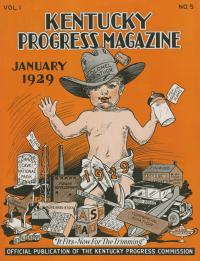
The Publications Collection contains runs of historical Kentucky newspapers, almanacs, and magazines.
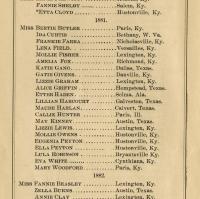
The library has a variety of directories and yearbooks with local information. In the library's current digital collection, there is a selection of residential and street directories, yearbooks, school directories, and organizational directories. These are all fully word-searchable.